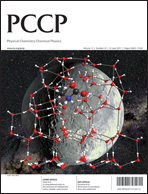This paper deals with the textural, microstructural and interfacial properties of Au/TiO2 nanocomposites, in relation to their photocatalytic activity for splitting of water. TiO2 samples of two different morphologies were employed for dispersing different cocatalysts, such as: Au, Pt, Ag or Cu, for the sake of comparison. The samples were characterized using powder XRD, XPS, UV–visible, thermoluminescence, SEM, HRTEM and SAED techniques. Compared to other metal/TiO2 photocatalysts, Au/TiO2 with an optimum gold loading of 1 wt% was found to exhibit considerably higher activity for visible light induced production of H2 from splitting water in the presence of methanol. Further, the sol–gel prepared TiO2 (s.TiO2), having spherical grains of 10–15 nm size, displayed better photoactivity than a Degussa P25 catalyst. The electron microscopy investigations on s.TiO2 revealed significant heterogeneity in grain morphology of individual TiO2 particles, exposure of the lattice planes, metal dispersion, and the interfacial metal/TiO2 contacts. The gold particles were found to be in a better dispersed state. O2 TPD experiments revealed that the gold nanoparticles and Au/TiO2 interfaces may serve as distinct binding sites for adsorbate molecules. At the same time, our thermoluminescence measurements provide an insight into Au-induced new defect states that may facilitate the semiconductor-to-metal charge transfer transition. In conclusion, the superior photocatalytic activity of Au/TiO2 may relate to the grain morphology of TiO2, dispersion of gold particles, and the peculiar architecture of metal/oxide heterojunctions; giving rise in turn to augmented adsorption of reactant molecules and their interaction with the photo-generated e−/h+ pair. The role played by methanol as a sacrificial reagent in photocatalytic splitting of water is discussed.


 Please wait while we load your content...
Please wait while we load your content...